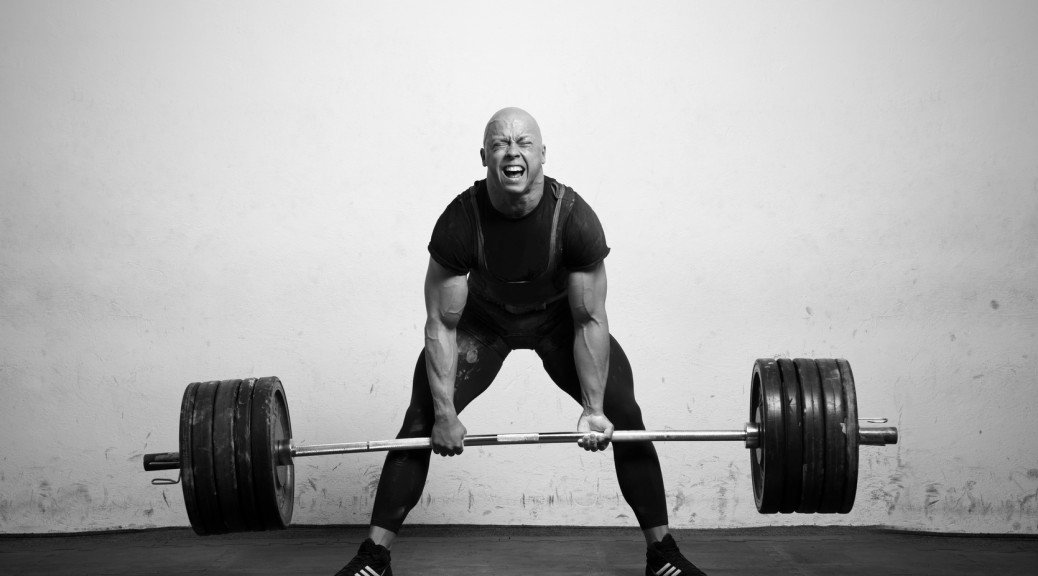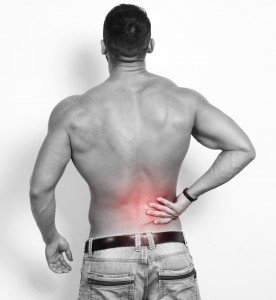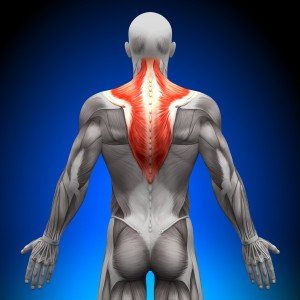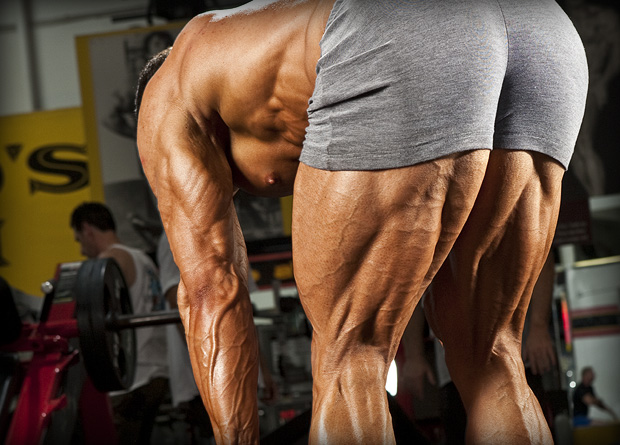On occasion bodybuilders train large muscle groups such as legs and chest very intensely, often to the exclusion and neglect of other body parts. This selective training can result in muscular imbalance in which some muscles become stronger than others. This increases the risk of injury. From an aesthetic standpoint, the physique looks fitter and more proportional when all muscle groups are developed to their fullest potential.
DON’T NEGLECT THESE:
GLUTES
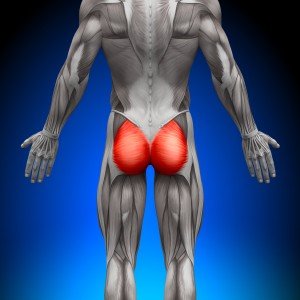 The key to developing the glutes is to perform specific exercises that isolate the major muscles of this area: the gluteus maximus, gluteus medius and the gluteus minimus.
The key to developing the glutes is to perform specific exercises that isolate the major muscles of this area: the gluteus maximus, gluteus medius and the gluteus minimus.
Here are several exercises that directly work the glutes:
Glute squat: Take a stance slightly wider than shoulder width. Descend slowly – past the point at which your thighs are parallel to the floor – while keeping your weight on your heels. Sit back as you move through the exercise. This action keeps the leverage and emphasis off the frontal thigh and squarely on the glutes. Slowly return to the starting position. Keep your glutes tight throughout the exercise.
Reverse hyper-extensions: Lie face down on the hyper-extension bench so that your legs are extended off the bench and form a right angle to your torso. Keeping your glutes tight and your legs together, lift your legs upward in an arc. Squeeze your glutes even more tightly as you reach the contracted position. Lower the legs in an arc.
Leg press with glute emphasis: To work the glutes on the leg press simply take a wide stance and place your feet high on the platform. Press up and down in a single, continuous movement. Keep constant tension on all working muscles as you push through the exercise.
Stiff-leg deadlift: This exercise is a pure glute-isolation movement. To begin the exercise bend forward and arch your back. Stretch your hamstrings at the bottom as you pick up the weight. Keeping your legs straight or slightly bent, slowly lift the bar.
At the top of the movement tighten your glutes, drive your hips forward and lock your knees. Then slowly return to the start position, pushing your abdominals toward the floor. Pivot at the hip joint and not with your lower back. Keep everything tight in the process.
ERECTORS
These muscles border each side of the spinal column. In people with poor abdominal tone, the erectors can become weakened and inflexible – a condition that can increase the inward curve of the back. This tends to lead to back strain and ultimately lower-back pain. Because strong abdominal muscles help support the spine and keep the back in proper alignment, a good idea is to regularly strengthen the abs as well as the erectors so that lower-back conditioning can be achieved and maintained.
Here are two exercises that will accomplish this:
Ab isolation: The type of abdominal exercise I recommend requires a partner and a slant board. Get into position by first hooking the insteps of your feet under the padded roller or bar at the top of the board. Then have your training partner lie face down behind you on the slant board. This position forms a cushion for your lower back and also secures the hip joint and lets you better isolate your abs during the exercise.
Clasp your hands behind your head and lift your torso up toward your knees. Keep your ab muscles completely tight and pulled in as you curl forward. Crunch down at the top of the movement. Then return to the starting position using the strength of your erector muscles. Be sure to pivot over your partner and not at your hip joint. Get a good stretch at the bottom of the movement.
Hyper-extension: This exercise is an excellent one for strengthening the lower back. Hook your heels under the hyper-extension apparatus so that your torso can move freely up and down. Clasping your hands behind your head, lower your torso toward the floor. Then slowly lift it up until your torso is parallel to the floor.
TRAPS
The trapezius muscles (known as the traps) are kite-shaped muscles that extend from the base of the neck down to the middle of the back. The traps deserve extra attention in training because they help support the shoulders and can be seen from the front of the physique.
The three best exercises for developing the traps are shrugs, lateral raises and behind-the-neck presses.
Shrugs: This exercise directly stresses the trapezius. Take a dumbell in each hand and hold them on each side of your body. Lift the dumbells while imagining being able to make your shoulders shrug as high as your ears. You can also perform shrugs with a barbell. Lift the weight using the strength of your traps. Be sure to squeeze your traps hard at the top of the movement. Lower the barbell and repeat the movement.
Behind-the-neck press: Sit on a bench or seat and take a wide grip on the barbell. Drop your shoulders and flex your lats. Press the weight to an overhead position and straighten your elbows. Then push the weight back slightly but without arching your back. This entire action isolates your delts. All the emphasis is right on your shoulders and traps. Lower slowly and repeat.
Lateral raise: With a dumbell in each hand and arms held along the sides of your body, lift the weights upward to about shoulder level. Keep your elbows rotated back. At the top of the movement lower your shoulders. Together the elbow and shoulder positions keep the stress firmly on your deltoids. Lower the dumbells and repeat.
FASCIAL STRETCHING

To continue making gains you should incorporate my technique of fascial stretching – intense stretching between sets when the muscle is fully pumped – into your workouts. By opening up the area between the fascia (a protective sheath of connective tissue) and the muscle it surrounds, fascial stretching dramatically enhances muscular growth, size, separation and strength.
When the fascia is stretched the muscle underneath has more room to develop. Stretching also gives the muscle better shape, with more convolutions. As a result, muscular separation improves too. The overall effect is larger muscles and better separation between muscle groups.
Fascial stretching elicits responses in muscle groups that have reached sticking points in training. If you have a certain muscle that still seems at a stalemate in size, strength or appearance, then stretching that muscle will help you overcome these frustrating plateaus.
In addition, stretching loosens tight muscles, which tend to trap lactic acid. Lactic acid is a waste product that accumulates in muscle cells during hard training. When lactic acid builds up, muscular fatigue is the result. Stretching helps release lactic acid from muscle cells into the bloodstream so that lactic acid doesn’t interfere with muscular contraction. This loosening effect of stretching also helps you breathe better during workouts, thereby increasing your oxygen utilization for improved energy levels.
Fascial stretching is not a gentle, touch-your-toes type of exercise you might associate with conventional stretching. As the stretch begins the body part being trained is guided into position, stretched past the point of pain and then held in that position for about 10 seconds. You should exhale and relax as you go into the stretch. Do not hold your breath.
Bottom line: Pay more attention to your forgotten muscles, adding fascial stretches into your workout, and you’ll start making greater gains in size and symmetry in no time at all.

